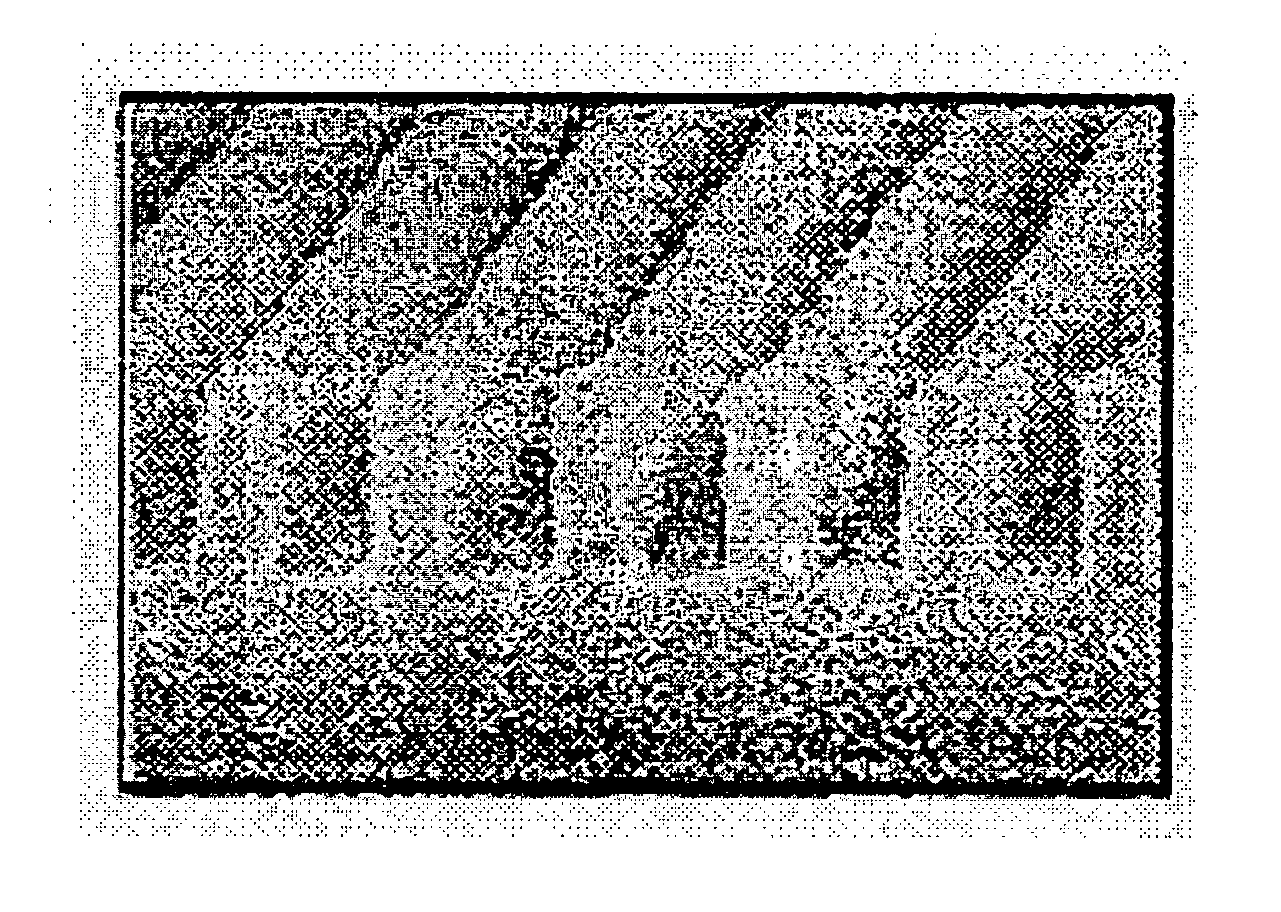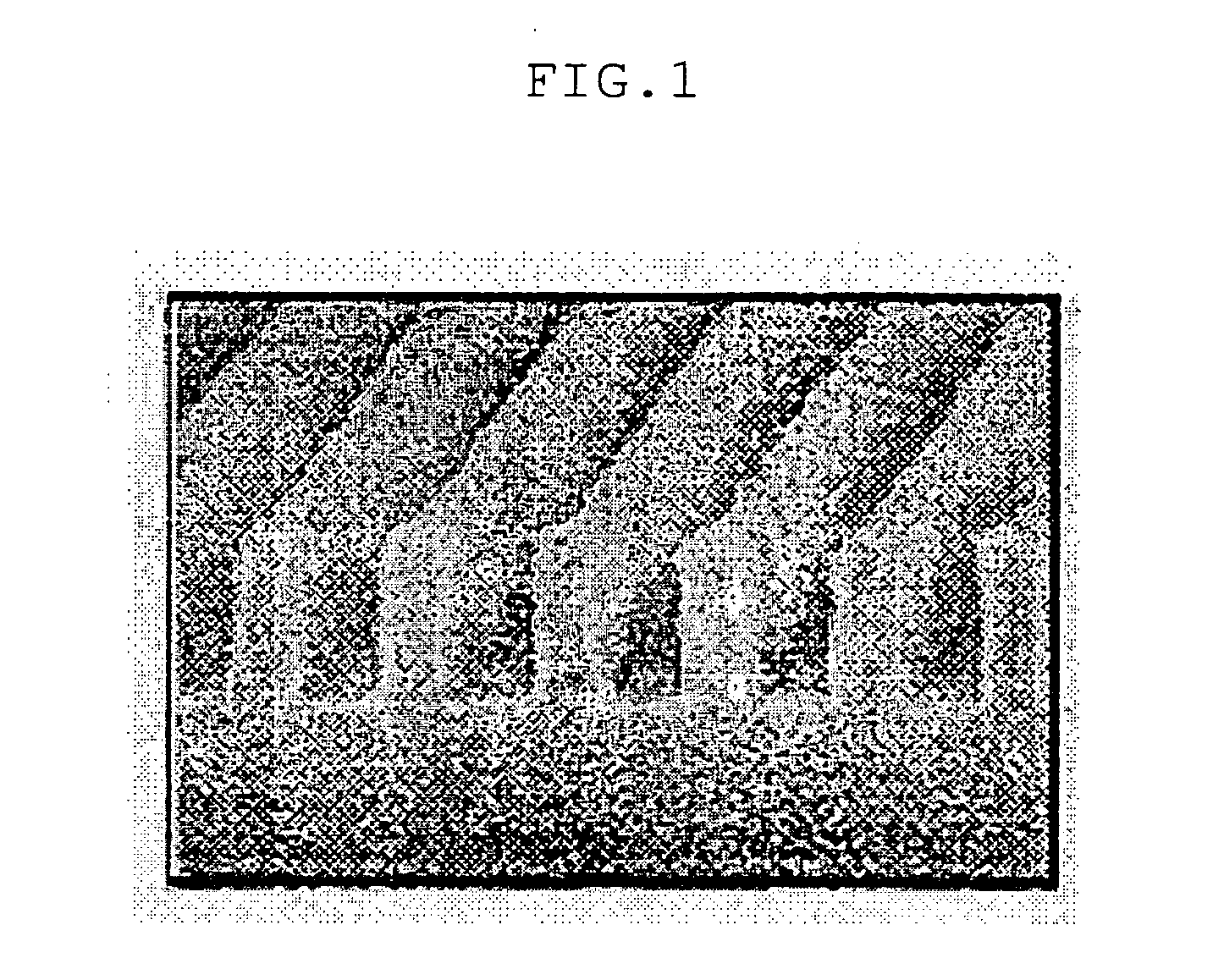Light absorbent agent polymer useful for organic anti-reflective coating, its preparation method and organic anti-reflective coating composition comprising the same
- Summary
- Abstract
- Description
- Claims
- Application Information
AI Technical Summary
Benefits of technology
Problems solved by technology
Method used
Image
Examples
example 1
[0047] Synthesis of Light Absorbent Agent Polymer
[0048] 20 g of maleic anhydride and 19 g of 5,8-dihydroxy-1,4-naphthoquinone (0.5% by mole per maleic anhydride) were dissolved in 26 g of PGMEA. The dissolved mixture was added with 0.5 g of AIBN to form a vacuum condition then reacted at 65° C. for 7 hours. After completing the reaction, the solvent was removed from the obtained solution by means of an evaporator. Thereafter, the treated solution was put under deposition and filtration processes in distilled water, then washed by using ethylether several times to produce the light absorbent agent polymer of formula I (yield 40%).
[0049] Molecular weight: 7,000.
example 2
[0050] Preparation of Organic Anti-Reflective Coating Composition
[0051] 1 g of the light absorbent agent polymer prepared from Example 1 and 0.4 g of the cross-linking agent polymer of formula III were dissolved in a solvent mixture comprising 4 g of propylene glycol methylether acetate solvent; 10 g of methyl 3-methoxy propionate solvent; 10 g of 2-heptanone solvent; and 7 g of tetrahydrofurane solvent. After adding 0.1 g of the thermal acid generator having the structure represented by the formula VII to the resultant material to be dissolved, the dissolved mixture passed through a filter to produce the desired organic anti-reflective coating composition.
example 3
[0052] Formation of Organic Anti-Reflective Coating and Photoresist Pattern
[0053] On a silicone wafer, a spin-coating was carried out with the organic anti-reflective coating composition prepared in Example 2, then a baking process was conducted for the obtained material at 215° C. for 2 minutes to generate the cross-linkage bond and form the desirable anti-reflective coating. Thereafter, the obtained anti-reflective coating was put under a coating process with a so-called Keum Ho petroleum photosensitive agent (the name of generally used photoresist materials) and another baking process at 110° C. for 90 seconds. After conducting the above baking process, the baked product was exposed to a light source by means of an ASML / 900 scanner apparatus, then, under an additional baking process at 130° C. for 90 seconds. The exposed wafer was developed using an aqueous solution of 2.38% by weight of TMAH. From the developed material, produced was the pattern shown in FIG. 1.
[0054] As above...
PUM
| Property | Measurement | Unit |
|---|---|---|
| Temperature | aaaaa | aaaaa |
| Temperature | aaaaa | aaaaa |
| Temperature | aaaaa | aaaaa |
Abstract
Description
Claims
Application Information
 Login to View More
Login to View More - R&D
- Intellectual Property
- Life Sciences
- Materials
- Tech Scout
- Unparalleled Data Quality
- Higher Quality Content
- 60% Fewer Hallucinations
Browse by: Latest US Patents, China's latest patents, Technical Efficacy Thesaurus, Application Domain, Technology Topic, Popular Technical Reports.
© 2025 PatSnap. All rights reserved.Legal|Privacy policy|Modern Slavery Act Transparency Statement|Sitemap|About US| Contact US: help@patsnap.com



